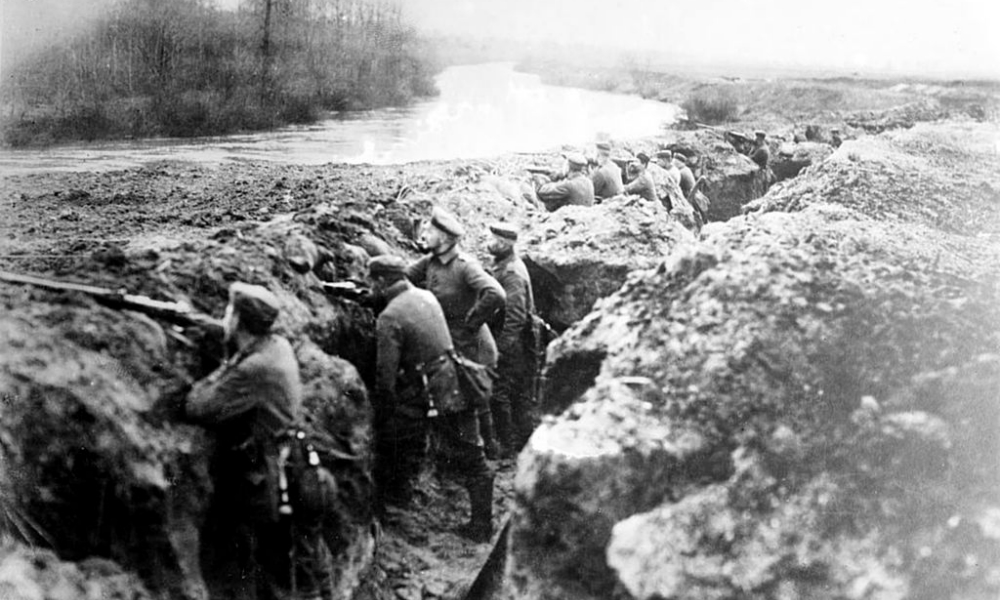Cathal J. Nolan, The Allure of Battle: A History of How Wars Have Been Won and Lost (Oxford University Press, 2017)
In The Age of Battles the late Russell Weigley wrote of an era when commanders sought out grand battle as the principal means of obtaining decision. This quest for decisive results at a reasonable cost was elusive, as Weigley noted in his introduction:
The age of battles nevertheless proved to be an age of prolonged, indecisive wars, wars sufficiently interminable that again and again the toll in lives, not to mention the costs in material resources, rose grotesquely out of proportion to anything their authors could hope to gain from them.
While writing about a 200-year block of time set in Europe, Weigley’s book was published, quite ironically, in 1991, the year that a US-led force seemingly trounced the inept Iraqi Army, led by its equally inept leader Saddam Hussein, in Operation Desert Storm. Once described as a “triumph without victory,” that brief but grand battle did not really accomplish as much as we originally thought. While the goals of that war were limited and the results temporary, at least it did not produce a disproportionate loss in terms of lives or treasure.
In this, his fourth book, Boston University historian Cathal Nolan expands the lens and framework of Weigley’s critique forward another 130 years. Nolan finds decisive battles to be rare events in wars between great powers between the seventeenth and twentieth centuries. Despite their poor historical pedigree, the allure of short fights producing sure victories by brilliant commanders was deeply inculcated into both civilian leaders and the professional militaries.
Over a series of crisply written cases, Nolan traces the development of what he calls “the allure of battle,” which is an intoxicating belief in a military genius that can conceive and execute a stunningly short and overwhelming victory. Nolan contends that the illusion of this alluring decisiveness has abetted dangerous and aggressive behavior by states. He also finds that, with a few exceptions, major power war can only be decided by large-scale mobilization, superior management of material resources, and “grinding exhaustion.” For Nolan, the enticing allure needs to give way to the fundamental conclusion that great power war is determined far more often by deep moral and material attrition, a mechanism often misunderstood or vaguely applied. Readers looking for additional insights should delve into Carter Malkasian’s work on modern warfare and attrition.
The early chapters, all set in Europe, establish the author’s framework. From Gustavus Adolphus to Marlborough, and then on to Napoleon, Nolan shows the development of an enduring belief in short wars based on operational brilliance as the gold standard for conceptions of warfare. As Nolan puts it, “For Napoleon’s worshippers and Clausewitz’s acolytes, the Philosopher’s Stone became the military genius who transmutes maneuver into decisive annihilation in a climactic battle or campaign.”
The core of the book’s arguments center around Prussian and German cases, particularly Otto Bismarck and Field Marshal Helmuth von Moltke’s stunning victories over the hapless Habsburg Empire in 1866 and the humiliation of Napoleon III and the French in 1870. It is these efforts to create modern versions of Cannae that dominated subsequent operational art, military doctrines, and officer education.
The battle of Koniggratz is exploited in great detail by Nolan as a sterling example of Vernichtungsschlacht, or decisive battle of annihilation. Von Moltke was committed to the rapid mobilization of the Prussian field armies, and their even more rapid deployment leveraging the mobility of railroads. Once in the field, his armies would exploit the superior firepower of the Dreyse “needle gun” rifle, and overwhelm the opposition. The poorly led Austrians crumbled under the massed forces in Prussian blue arrayed against them, but bloodied them with far superior rifled artillery.
In the next war, the Prussians again mobilized rapidly and were able to outmaneuver the defensively minded French at both Metz and Sedan. These were not the decisive cauldrons von Moltke wanted, but they bottled up the French field armies just the same. Having introduced the rapid-firing Krupp steel cannon, the Prussians expected to roll over the French. However, in skirmishes and set-piece defensive positions like Gravelotte-Saint Privat on August 18, it was the Germans who found that crossing the killing field was a costly exercise. The French chassepot rifle and rapid-firing mitrailleuse proved to have stopping power as it scythed German assault formations. Ultimately the French withdrew into Paris where they were besieged and subjected to both severe shelling and mass starvation. Months of irregular warfare challenged the political aspirations of the Kaiser until Paris capitulated in late January 1871.
Von Moltke himself realized that his maneuvers were no longer able to deliver the results desired by policy; however, his warnings were not heeded in August of 1914. It was the First World War that laid bare the shallowness of the short war illusion and the strategic costs of gambling with the Iron Dice. Dangerous assumptions and unexamined new technological advances combined to create the opposite of a Cannae. “What met a generation of schoolboys raised on heroic stories of Marlborough, Frederick and Napoleon,” Nolan observes, “was not glory but hard death in ways old and new.”
In Flanders fields, Napoleon’s blazing maneuvers offered no insights about how to cross “no man’s land.” Instead of rapid maneuvers and a quick return home by Christmas, the contestants ended up mauling each other for years of attrition and with the loss of a generation. Rather than decisive battles and laurels, the Tommies, Poilus, and eventually Doughboys, and their German counterparts, faced:
Cold death from a sniper while tangled and frantic on jags of barbed wire. … Hot death as liquid flame gushed over a man to light him up like a Roman candle. . . . Gurgling death, throat ripped out or jaw torn away by a machine-gun bullet, unable to cry for aid. Lonely death at the bottom of a shallow crater filled with yellow rainwater and piss, and bits of horse and human flesh.
But the lessons of that war were not absorbed, particularly by the Germans, who continued to harbor conceptions of war that emphasized brilliant plans and risky options over practical economic and logistical realities. Prussian logistics shortfalls were overlooked and remained major deficiencies in the German General Staff’s approach to future wars.
The book is well designed and executed, but it is both Euro- and land-centric. The singular exception is Nolan’s chapter on Japan’s conduct of the Second World War in the Pacific. Had the author extended his analysis of that war to the US Navy’s relentless campaign of unrestricted warfare against the Japanese, he would have found more evidence of his central themes. A Navy built around Mahanian precepts for fleet battle ground down its opponent with an exhausting but unanticipated campaign of attrition from beneath the sea.
While the author clearly understands the relevance of the American Civil War, the book lacks a detailed assessment of our own country’s costly education about how firepower advances altered tactics and restored defensive dominance. Nolan makes frequent references and is evidently quite aware of the relevance of this to an American audience. Readers should examine Williamson Murray and Wayne Wei-siang Hsieh’s superb The Savage War. That single-volume operational history complements Nolan’s emphasis on both moral and physical attrition and reinforces his ideas about organizational management of resources.
Looking at this book through the lens of adding value to professional military education, this reviewer was left wishing the book had spent more time on the translation of military success into sustained political conditions. The American “way of battle” often overlooks this essential task. Success, defined as decisive and lasting political results, eventually requires the consolidation of military conditions into a new and enduring political order. Consolidating this order cannot be an afterthought to any study of war, as recent scholarship notes. It is simply incomplete to overlook post-conflict stability and the art of governance.
All in all, Cathal Nolan’s work is a monumental effort that extends and confirms Weigley’s earlier history. The allure of wizard weaponry and the delusion of what Lt. Gen. H.R. McMaster once called “easy wars” can be taken too far. This emphasis on science and technology can obscure the art of war, the enduring role of friction, as well as the human dimension. As the author warns in his concluding chapter, “Always be deeply skeptical of short-war plans and promises of easy victory, for they shall surely go awry as combat commences and descends into chaos.” Decisive victories will rarely be obtained by short wars or without substantial costs and risks. Equally important, erroneous conceptions of war can retard an appreciation for new developments in the constant evolution of the character of warfare.
The Allure of Battle is highly recommended to serious students of war, especially senior officers who must balance the planning of wars with the material resources needed to execute them. Trends in interstate conflict have dulled our memories about these crucial lessons. Few in office or command today remember or recognize the mobilization requirements involved in large-scale wars. It is a previous generation that understands the attendant moral and logistical challenges of gaining victory in protracted conflicts halfway around the globe. Yet, as we reenter an era marked by the potential scale of great power competition, it would behoove our policymakers to read and consider Professor Nolan’s findings. Despite “battle’s abiding allure,” there is far more to war than just battle, and we should always study the phenomena beyond simply seeking tactical results.


